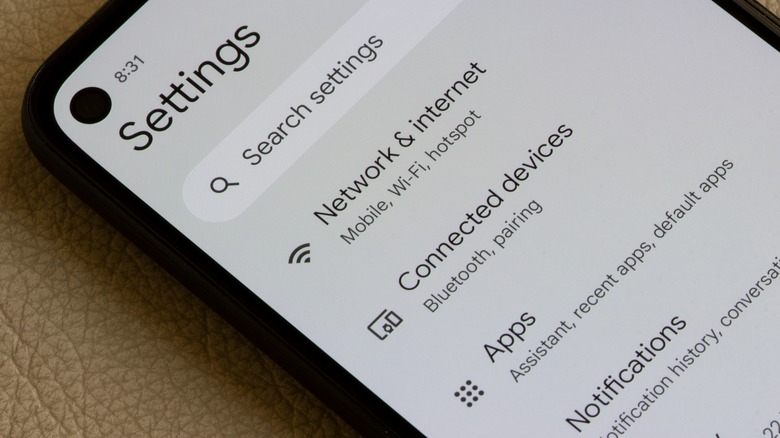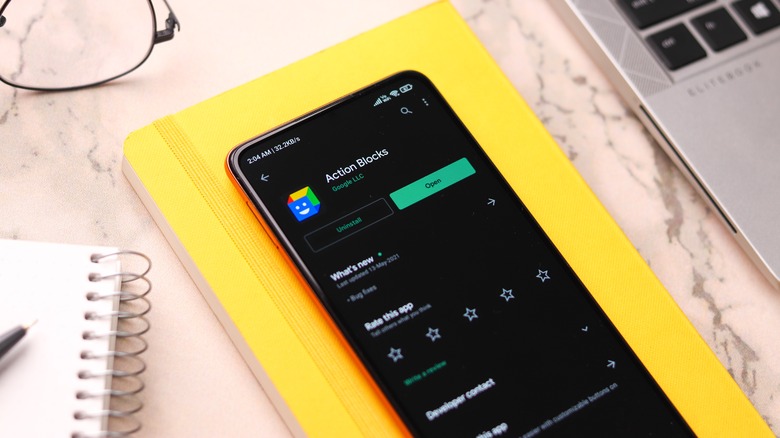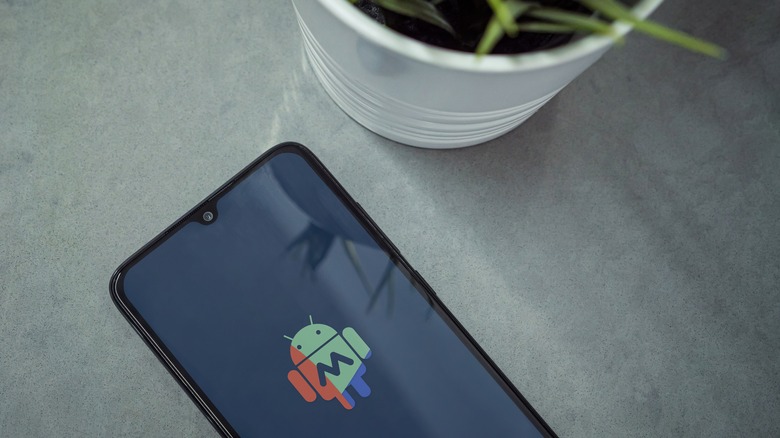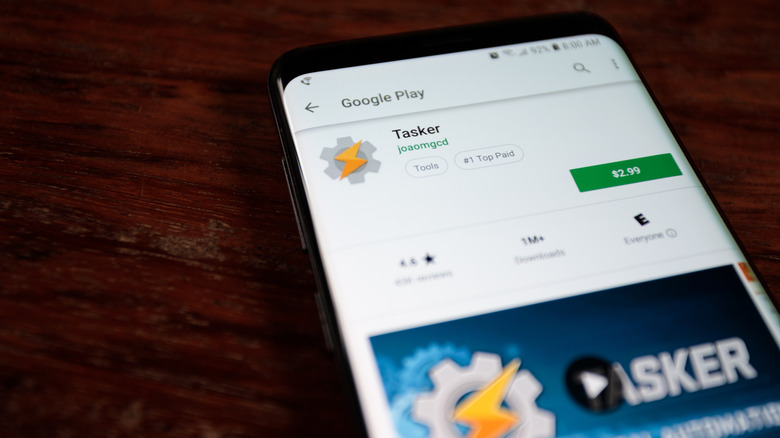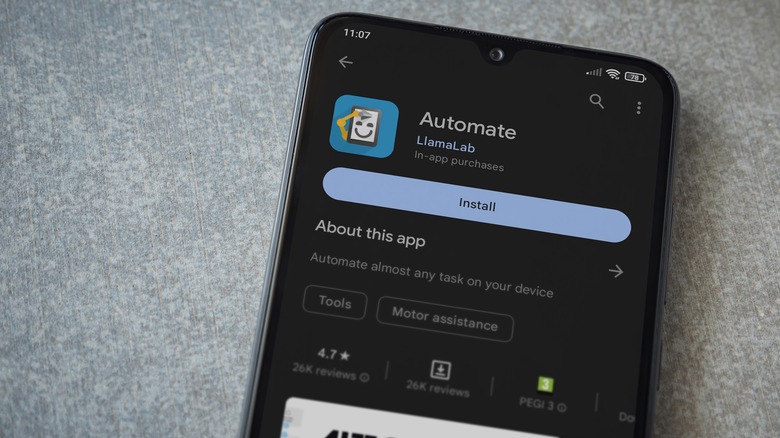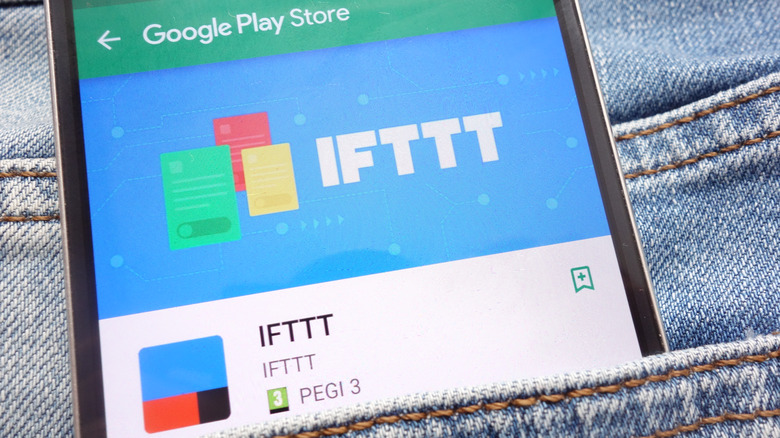5 Of The Best Automation Apps For Retraining Your Android Phone
Android devices have become integral to our daily lives, so the need for automation apps has never been more pronounced — in fact, they are among some of the best apps to increase your productivity. Whether you're seeking to streamline tasks or simply personalize your Android experience, automation apps are usually the way to go. These apps provide a user-friendly means of retraining your Android device, allowing it to work smarter, not harder.
While automation apps empower you to create customized routines, simplify everyday tasks, and optimize your device's performance, they also offer much more niche functionalities, from managing files and backups to automating messaging, calls, and device configurations. These apps cater to both novices and seasoned users, fostering a sense of control and efficiency in the Android ecosystem.
To pick the best automation apps for Android, we have tried, tested, and put the most popular apps in this category through their paces by trying out simple tasks like adjusting screen brightness at a set time to more complex automation such as location-based routines. We will also look at how these apps automate tasks, their pros and cons, as well as pricing information.
Action Blocks
Action Blocks, Google's free automation app for Android, provides a simple yet effective way to create easy automation using Google Assistant. Once installed, the app provides a user-friendly interface, with a blue "Create Action Block" button at the bottom of the screen. Users can choose from preset Common Actions or create custom actions based on their preferences.
The app allows users to automate tasks that Google Assistant can perform, turning them into widgets or mini-apps on the home screen — essentially, you assign an instruction to a widget that Google Assistant performs when tapped. For example, you can create an Action Block that tells Google Assistant to "Play Taylor Swift on Spotify." The process involves selecting the desired action, typing in the command, and testing the automation. Users can also customize the Action Block's appearance with an image and a name.
It's not only for those who prefer tapping over voice commands but also for individuals with cognitive disabilities or anyone who wants quick shortcuts for Google Assistant tasks. You can also resize, move, edit, or delete Action Blocks at any time. That being said, the app is entirely dependent on Google Assistant — so if you are not comfortable with or can't use Google Assistant, this could limit the app's usefulness.
MacroDroid
MacroDroid comes with its own vocabulary — this app allows users to create "macros" (tasks) triggered by specific events to perform designated "actions." The app offers over 100 actions and supports numerous "triggers" like SMS reception, location-based events, time, and notification specifics. Additionally, users can apply "constraints," defining conditions necessary for a macro to run. The app can automate tasks such as enabling dark mode during nighttime, reading notifications aloud to conserve screen use, or sending automatic SMS messages based on specific situations.
MacroDroid also includes various backup methods, including local and cloud options, so you can restore recent configurations in case of inadvertent errors. Additionally, the app provides a plugin section to expand its functionality by enabling integration with compatible third-party apps.
However, the free version is pretty limited for an automation app. It only lets you run just five macros, has ads, and supports fewer constraints and actions. The Pro version requires a one-time payment of about $5.
Tasker
With over 200 built-in actions, Tasker is one of the most potent tools for Android that provides extensive customization options you can use to personalize your mobile experience. Available for purchase on Google Play for $3.50 with a seven-day free trial, Tasker operates as a trigger-based system, executing tasks upon meeting designated conditions. Users can create intricate automation scenarios, such as launching preferred apps when headphones are plugged in, sending predefined messages upon reaching specific locations, or adjusting phone settings based on time or location.
Tasker's interface comprises four tabs: Profiles, Tasks, Scenes, and Vars (variables). Profiles act as containers for conditions, while Tasks organize actions to be performed. Scenes serve as user interface elements, and Vars offer advanced users the ability to add programmable functions and interface customization. Tasks can range from simple settings adjustments to complex, multi-action sequences. Another advantage of Tasker is that its online community is more significant than most other apps, so Tasker tips to automate your life are just a quick search away.
In our testing, we found that Tasker's learning curve can get really steep, requiring users to comprehend its functionalities thoroughly. Despite its power, achieving certain functionalities may also demand a rooted phone or significant time investment.
Automate
Automate by LlamaLab employs a flow chart system, simplifying the automation process and making it particularly user-friendly for those new to automation. Let's say you want to reduce screen brightness in the evening. To automate this action, you will need to follow these steps:
- Add the "Time Await" block from the "Date and Time" category to the workspace.
- Tap the block and set "Time of day" to 6 p.m.
- Then, add the "Screen Brightness?" block from the "Settings" category to the workspace and set "Brightness" to 20%.
- Finally, connect the blocks by dragging the connection point of one block to the other.
While basic automation such as this is pretty straightforward, users will likely hit a steeper learning curve with complex automation. The many options can get overwhelming, too. But, on the plus side, Automate can handle complex automation, making it a better overall app for automation. You can also benefit from Automate's community feature, where other users can share, download, and rate complete "flows" for all kinds of automation, from getting hourly weather forecasts to morse code SOS from the flashlight.
While we didn't come across any errors in our review, users have reported occasional bugs, signaling room for improvement in terms of stability. The free version only allows you to run flows with less than 30 blocks, as well. The paid version will cost somewhere in the range of $2–$5.
IFTTT
IFTTT, short for "If This Then That," is different from other automation apps on the list in that it is a mobile app that harmonizes various internet-connected apps like streaming sites, social media, and smart home apps as opposed to manipulating Android settings. It operates through "recipes," which dictate specific actions in response to events across different Android applications. For instance, posting a photo on Facebook can trigger an automatic share on platforms like Instagram or Flickr. Our review found that the app's interface is user-friendly, making it accessible for beginners and offering extensive guides for a smooth setup process.
To start automation using IFTTT, users need to create an account and connect their devices. The free version allows two recipes, while the Pro version at $2 per month offers 20 applets and enhanced speeds, and the Pro+ tier at $5 per month grants unlimited applets, AI services, and developer tools. Connecting devices involves simple steps detailed in guides on the IFTTT website. These guides facilitate various automations, such as linking SoundCloud likes to Spotify or managing thermostat settings based on room occupancy.
IFTTT will provide better utility if you want to automate business tasks like simplifying the compilation of blog posts into spreadsheets, automating invoicing and client management, and social media automation. However, you'll find that the range of services it can integrate with is limited, and a specific lack of features compared to other automation apps will make some applets challenging to create.
